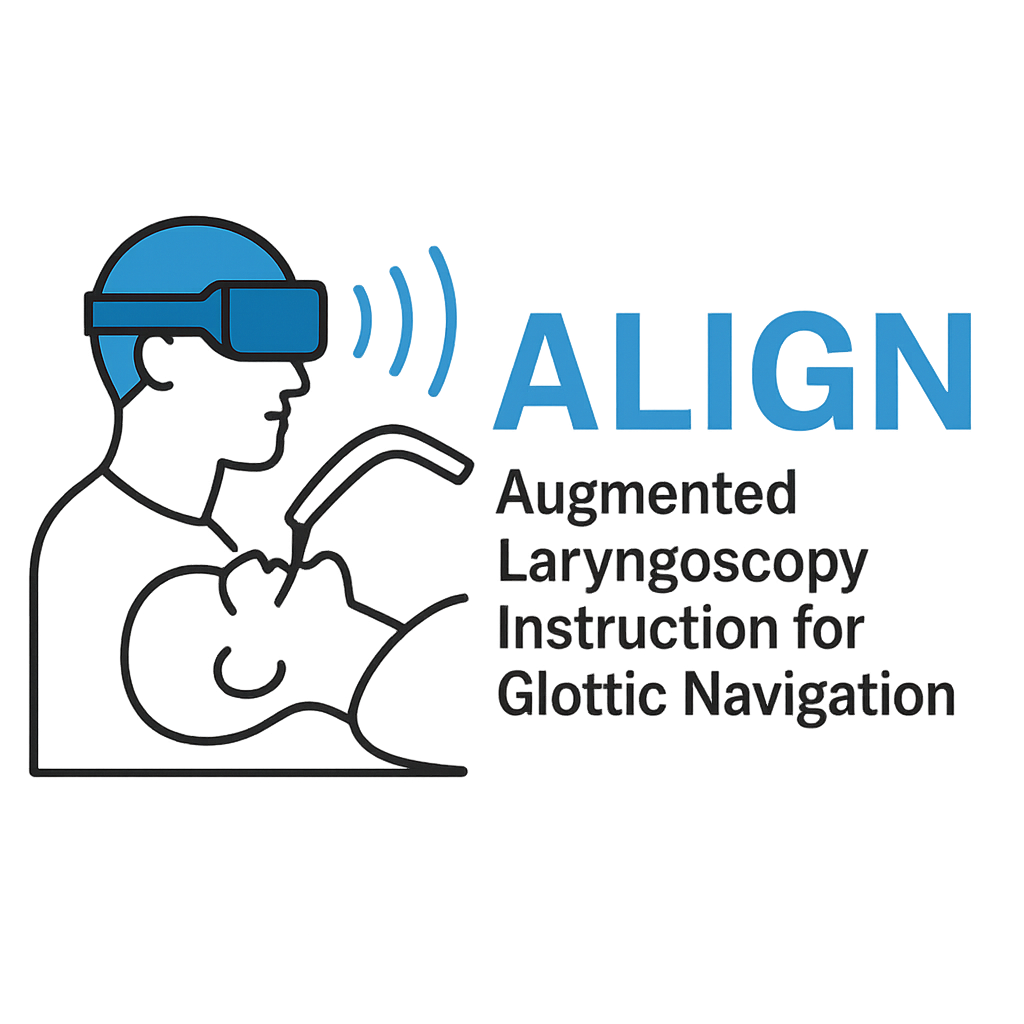BACKGROUND & RATIONAL
Early airway training is foundational for anaesthesia residents and rotating medical students. A critical but often underemphasized skill is optimal patient positioning to align the oral, pharyngeal, and laryngeal axes for laryngoscopy. Suboptimal positioning contributes to poor glottic visualization, increased intubation attempts, and potential patient harm. This is especially true in paediatric population.
Traditional teaching relies on didactics, variable bedside coaching, and trial-and-error practice. Extended reality (XR) platforms offer an opportunity to provide objective, real-time feedback on positioning in a controlled educational environment.
OBJECTIVES
PRIMARY OBJECTIVE
To evaluate the effectiveness of XR-based instruction compared with standard teaching for improving novice learners’ ability to achieve optimal laryngoscopy positioning.
SECONDARY OBJECTIVES
To assess retention of positioning skills at 6–8 weeks.
To measure learner confidence and self-efficacy in airway setup.
To explore objective performance metrics captured via XR sensors (e.g., facial plane angle, ear-to-sternal notch alignment, table height).
STUDY DESIGN & METHODS
PICO FRAMEWORK
Population (P): PGY-1/PGY-2 anesthesiology residents and senior medical students (M4) rotating through anesthesia.
Intervention (I): XR-guided training module (ALIGN) using headset overlays for positioning across varied patient body types.
Comparison (C): Standard airway positioning instruction (lecture + bedside demonstration).
Outcome (O): Primary — proportion of learners achieving Cormack–Lehane grade ≤ II view on first attempt with a standard blade. Secondary — POGO score, angle error, number of repositioning attempts, time to adequate view, self-efficacy survey, retention at 6–8 weeks.
DESIGN
Design: Prospective, randomized, crossover trial
Setting: MCW Simulation Center (manikin-based)
Sample size: ~36–60 participants (power calculation pending with biostatistics)
STUDY PARTICIPANTS
Inclusion: PGY-1/2 anesthesiology residents, M4 medical students on anesthesia rotation.
Exclusion: Prior advanced airway training (e.g., prior anesthesia residency or CRNA training).
PROCEDURES
1. Participants randomized to XR-first vs Standard-first arms
2. Training on manikin across 3 simulated body types (average adult, obese adult, pregnant)
3. Outcome assessment on unassisted laryngoscopy
4. Repeat assessment at 6–8 weeks for retention
DATA COLLECTION
CL grade and POGO score by two blinded faculty raters
Angle, alignment, and bed height metrics captured by XR headset telemetry
Self-efficacy questionnaire (Likert scale)
This study is PENDING approval.
Awaiting submission: Medical College of Wisconsin Institutional Review Board
Location: Medical College of Wisconsin | Wauwatosa, WI
Please check back in the coming months for updates and/or results.
